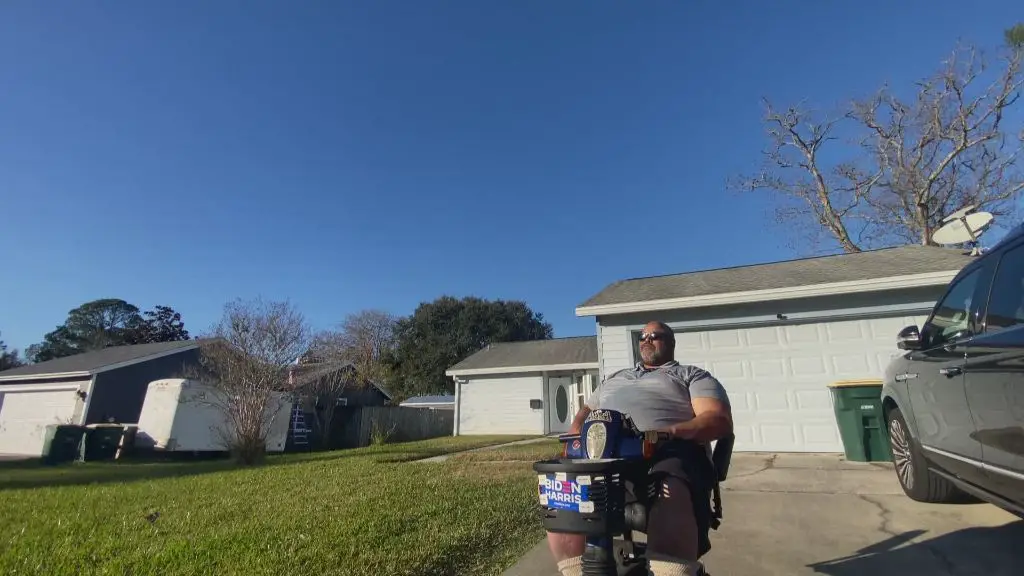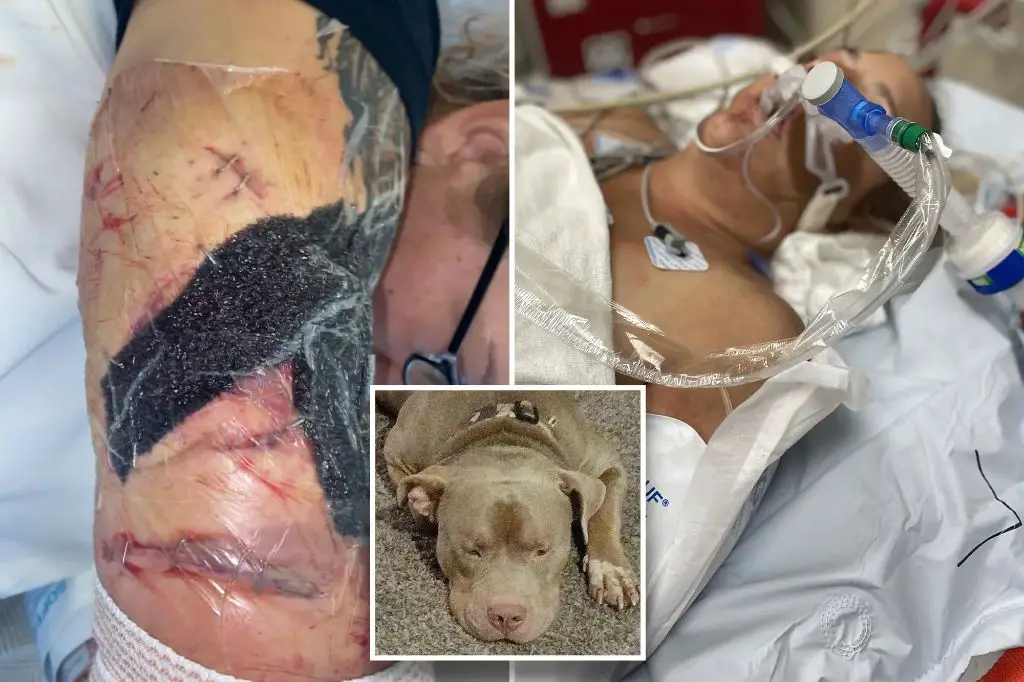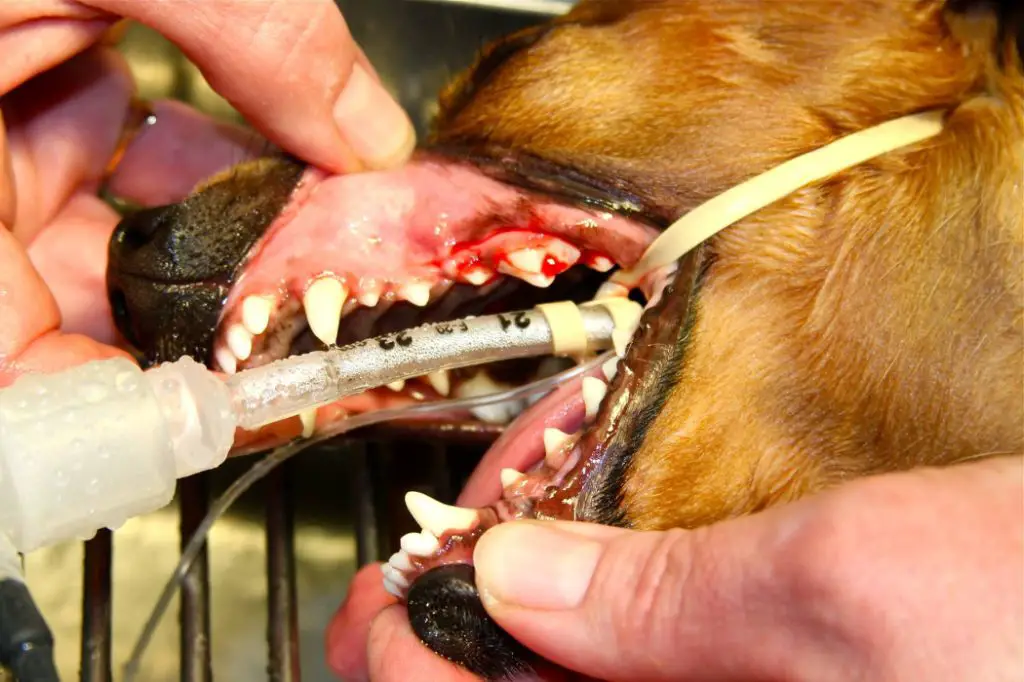Understand the Situation
If a dog approaches you aggressively, first assess if it is truly attacking or just being territorial. Dogs may initially run up barking to protect their space without intend to bite. Remain calm and avoid sudden movements, as this can further agitate the dog. Evaluate if you are in close proximity to the dog’s territory or something it is guarding. Also check for signs the dog is rabid or extremely agitated, as a diseased animal cannot be reasoned with.
If possible, locate the dog’s owner and ask them to restrain their pet. Yelling at the owner for help may also scare the dog off. Pay close attention to the dog’s body language and subtle signs of impending aggression, like growling, lunging, or baring teeth. This will let you judge if the dog is simply being protective versus engaging in an unprovoked attack.
Try to Avoid Violence
If a dog attacks, the first priority should be avoiding violence and diffusing the situation through non-confrontational means. Here are some tips:
Command the dog to stop: In a firm, authoritative voice, command “No!” or “Stop!” This may distract or momentarily interrupt an attack. Make sure commands are loud and clear.
Create distance: If possible, put furniture, bags, jackets between you and the dog. Back away slowly without sudden movements. Increase physical distance from the aggressive dog.
Shield yourself: If you have a purse, backpack, jacket or item in hand, use it to shield your body from bites. Passive resistance can sometimes deter an attack without provoking further aggression.
Avoiding violence should always be the first approach before considering more assertive self-defense. Remaining calm and creating space from the dog can often prevent escalation.
Target Vulnerable Areas
If an attacking dog leaves you with no choice but to defend yourself physically, aim for its most sensitive areas to have the greatest chance of escape. The eyes, nose, throat and neck are particularly vulnerable on a dog. A swift strike to the eyes or a blow to the throat can cause great pain and quickly disable the dog. Be aware that a neck strike risks serious harm, so only use it if absolutely necessary. The sensitive nose is also an effective target. A jab there will likely get the dog to release its bite. Targeting these areas requires precision under duress, so attempt them only as a last line of defense.
Use Tools if Available
If a dangerous dog approaches and an attack seems imminent, use whatever objects are available to protect yourself. Improvising tools can create distance from the dog or act as a shield. Sticks, rocks, jackets, bags, or umbrellas are common everyday items that can be utilized for defense.
Waving sticks vigorously or throwing rocks towards (not directly at) an aggressive dog may startle them and make them hesitate or retreat. Swinging a backpack, purse, briefcase or other bag can create a barrier between you and the dog. Taking off a jacket and wrapping it around an arm gives some protection if the dog bites. An open umbrella thrust forward can obstruct the dog’s path and disorient them.

Using improvised tools takes advantage of what is within reach and allows you to avoid direct physical contact with the attacking dog. These items distract the dog, obstruct their approach, or injure them just enough to enable your escape. However, objects do not guarantee stopping an aggressive dog. Always be prepared to flee and get to safety.
Fighting Back as Last Resort
Defending yourself physically against a dog attack should only ever be a last resort when all other options have been exhausted. An attacking dog can be extremely dangerous, so fighting back carries significant risks of injury or escalating the situation. However, if the attack is unrelenting and your safety is under immediate threat, you may have no other choice but to attempt to fight back. The goal should be to stun the dog or create an opportunity to escape, not necessarily to try to injure the animal.
If all other options fail, kicking or punching the dog’s snout can temporarily stun it and cause it to retreat. A dog’s snout and nose are very sensitive areas. However, be prepared for the dog to become more aggressive. Gouging the eyes is another last defense that may briefly disorient the dog, but this requires getting very close to the animal’s face and can prompt a more ferocious attack.
It’s important to keep in mind that fighting back should only be done in true self-defense and poses serious risks. Any form of violence against an animal should be avoided if at all possible. The goal is simply to get away from the attack safely. Seek immediate medical care for any injuries sustained, and consider reporting aggressive animals to animal control to prevent future attacks.
Seek Medical Attention
If you or anyone else is bitten or scratched by a dog, it is important to seek medical attention as soon as possible. Dog bites can easily become infected since dogs have bacteria in their mouths.
Thoroughly clean any bite wound or scratch with soap and warm water. Carefully check for any debris in the wound and remove it. Apply an antibiotic ointment and cover the wound with a clean bandage.
See a doctor promptly to have the wound professionally cleaned and properly dressed. The doctor may prescribe oral antibiotics to prevent infection. Be sure to take all medication as directed.
Let the doctor know if the dog that caused the bite is up to date on its rabies vaccinations. If not, you may need to undergo rabies treatment as a precaution.
Monitor any bite or scratch carefully over the next several days. Signs of infection include increasing pain, swelling, warmth at the site, redness, drainage of pus, or red streaks extending from the wound. Seek prompt medical attention if any of these occur.
Report the Incident
It’s important to inform authorities if a dog attacks you, even if the injuries seem minor. When a dog bites a person, there is a chance the animal may have rabies or other diseases transmittable to humans. Reporting the incident creates a record of the dog’s behavior in case it harms someone else in the future.
Provide authorities with the owner’s contact details, description of the dog, details about the attack, and any injuries sustained. Animal control will then investigate and determine if the dog should be quarantined and monitored for rabies. They can also evaluate if the owner is negligent and needs to control their dog better.

In severe attacks, you may need to file a police report for documentation, especially if legal action is pursued later. The owner may be held liable for medical bills, time off work, pain and suffering if negligence is established.
Reporting promptly also ensures you receive proper post-exposure rabies treatment if needed. While rabies is rare in domestic animals, it’s crucial to get life-saving vaccines within the short window after potential exposure.
Don’t hesitate to inform authorities about any dog that aggressively bites or attacks. It promotes public safety and holds irresponsible owners accountable for their pet’s behavior.
Consider Legal Action
If you or your dog suffered a severe injury from an aggressive dog, you may want to consider legal action. Consult a lawyer to see if you have grounds to sue the owner for medical costs, pain and suffering, or property damage. You generally have a good case if the owner was irresponsible and ignored leash laws or did not properly contain their dog. Your lawyer can send a demand letter asking the owner to pay damages or take the matter to court if needed. Legal action holds negligent owners accountable and prevents future attacks. However, legal processes can be time-consuming and expensive. Weigh the costs versus likely reward. You may at least want to file a formal complaint with animal control so there is a record of the incident.

Address Emotional Impact
Being attacked by a dog can be a traumatic experience, both physically and emotionally. Even if you escaped without serious physical injuries, the psychological impact can linger for a long time after. It’s important not to let the fear or anger from the attack take over your life or change your personality.
Consider speaking to a counselor or therapist to help process the emotions surrounding the incident. Talking it through can help relieve anxiety, stress, and other negative feelings that may arise. The counselor can also help you cope with memories or nightmares of the attack without developing an ongoing phobia or cynophobia (fear of dogs).
It’s understandable to feel uneasy around dogs for a while after being bitten or attacked. However, try not to let one bad experience color your perceptions of all dogs for life. Most dogs are not inherently aggressive if properly trained and socialized. While being cautious is wise, don’t withdraw from life or activities you previously enjoyed out of exaggerated fear. Healing both physically and mentally from a dog attack takes time, but professional counseling support can facilitate the process.
Promote Responsible Ownership
While defending yourself in the moment may be necessary, the long-term solution for preventing dog attacks starts with responsible pet ownership. Advocating for stronger animal control laws, required training for certain breeds, and low-cost spay/neuter programs can help curb aggression and attacks.
Contact your local representatives to push for legislation addressing issues like leash laws, mandated training courses, special licenses for some breeds, and breeder regulations. Get involved with local animal welfare organizations promoting spay/neuter clinics to reduce the stray population. Also look for opportunities to educate children and adults on safe behavior around unfamiliar dogs.

Public awareness campaigns on responsible breeding practices, early socialization, proper containment methods, and identification requirements for dogs can also make a difference. As a community, we must promote responsible dog ownership to protect people and make sure these beloved pets stay in good homes.